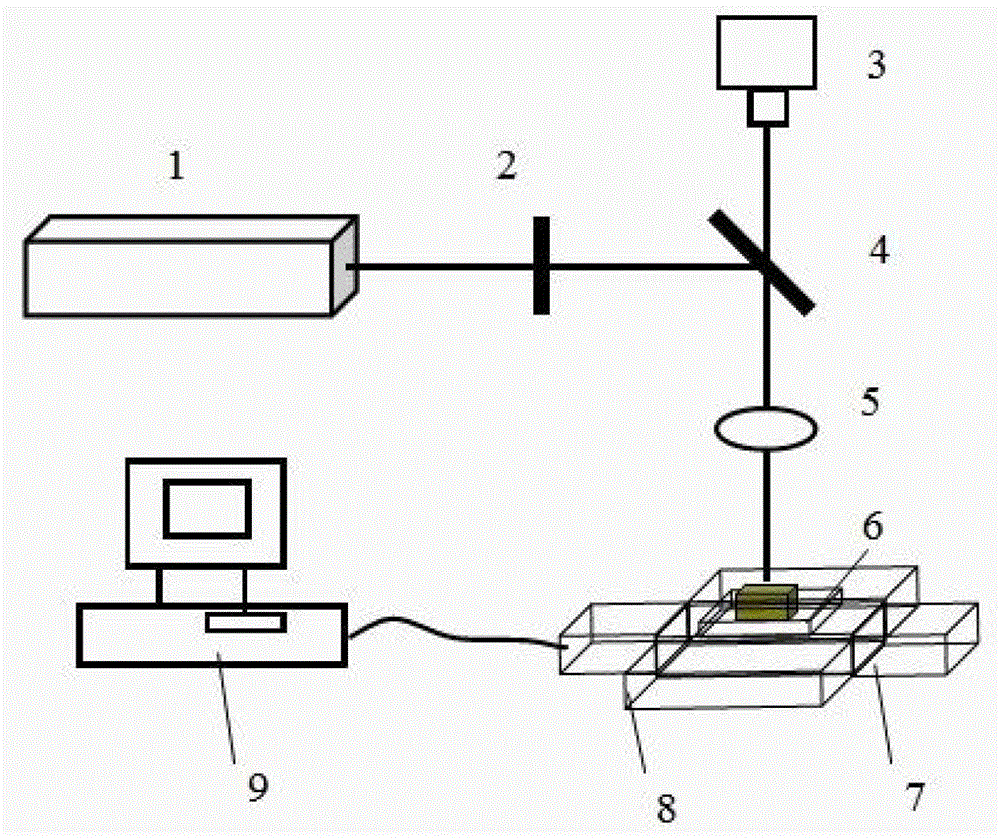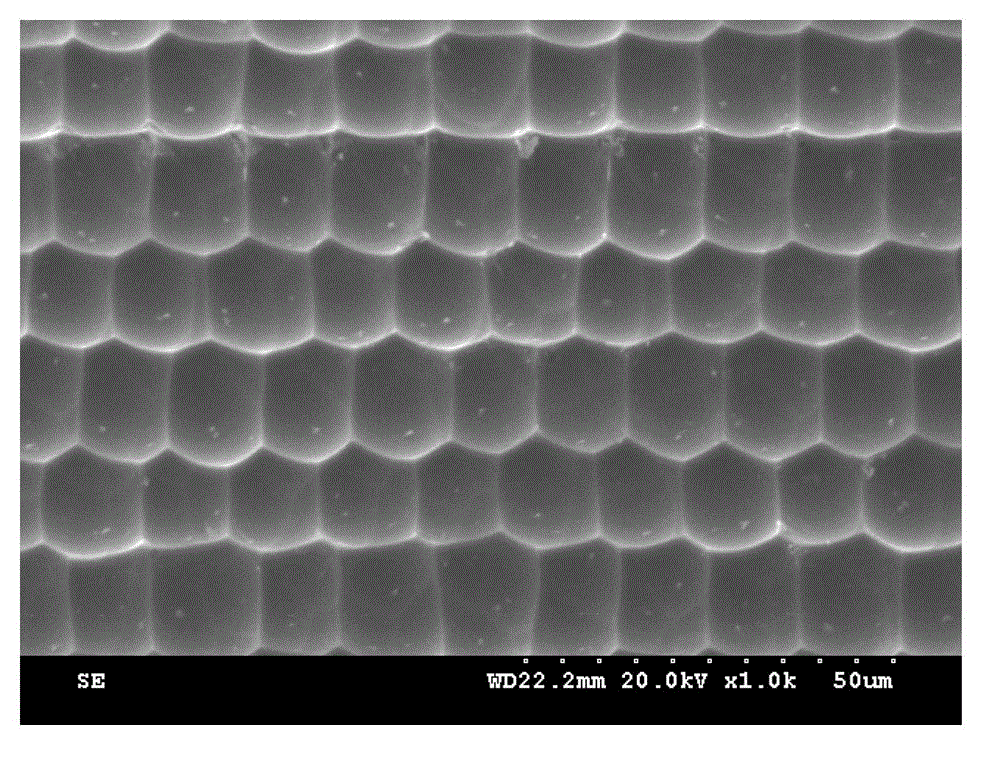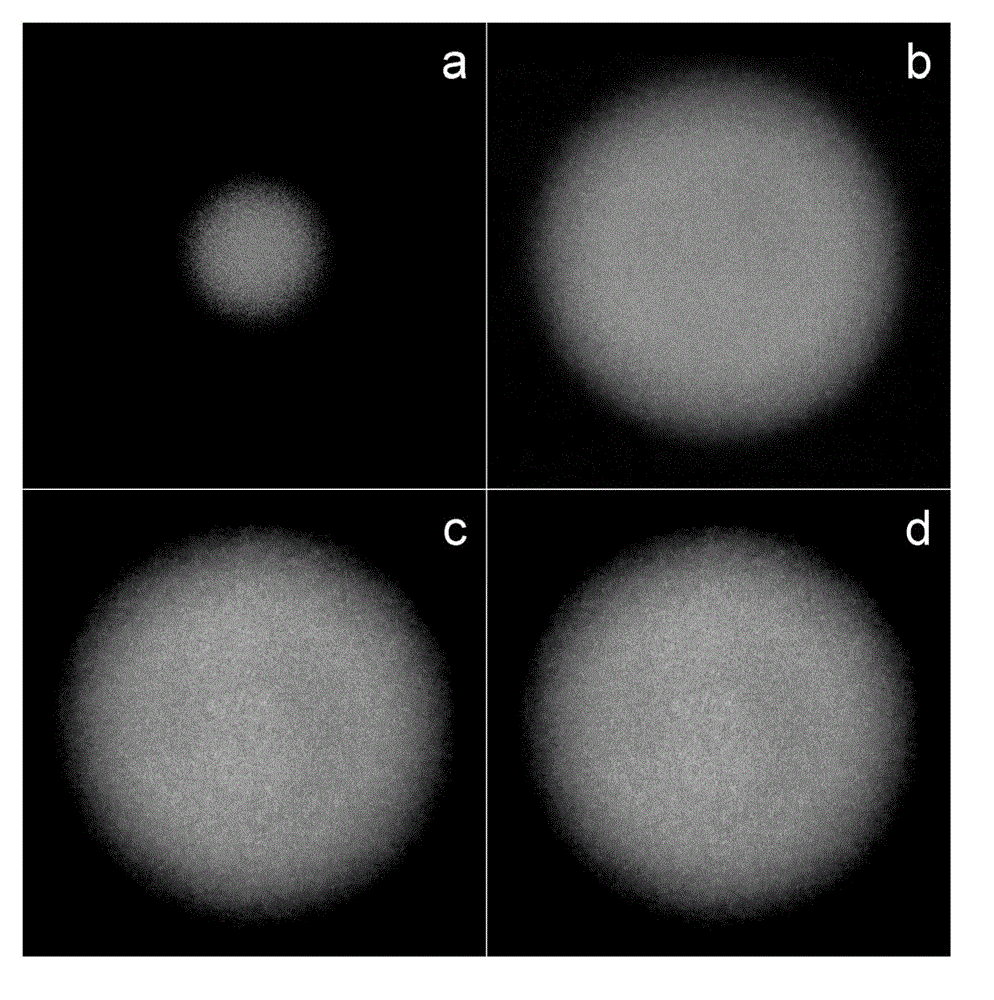Method for preparing quasi-periodic microlens array by wet etching with femtosecond laser
A micro-lens array and femtosecond laser technology, applied in laser welding equipment, lenses, optics, etc., can solve the problems of limited production efficiency of micro-lens array, affecting the quality of uniform light, low laser damage threshold, etc., and can eliminate the periodic light field. The effect of coupling superposition effect, high processing technology, uniform light advantage
- Summary
- Abstract
- Description
- Claims
- Application Information
AI Technical Summary
Problems solved by technology
Method used
Image
Examples
Embodiment 1
[0030] A method for preparing a quasi-periodic microlens array by femtosecond laser wet etching, comprising the following steps:
[0031] Step 1. Select the hard material used as the femtosecond laser target, put it into three solutions of acetone, ethanol, and deionized water in order to clean thoroughly, then place the target on the femtosecond laser micro-nano processing device, and select the pulse An ultrashort pulse laser with a width of 30fs, a frequency of 1kHz, and a wavelength of 800nm is focused on the surface of a hard material through an objective lens with a numerical aperture of 0.5;
[0032] Step 2. According to the individual average size of the irregular quasi-periodic microlenses to be processed, set the speed at which the precision processing platform drives the target to move, so that the femtosecond laser acts on the surface of the target with one pulse at intervals. Due to the special processing characteristics of the laser, a photodestructive zone wil...
Embodiment 2
[0038] A method for preparing a quasi-periodic microlens array by femtosecond laser wet etching, comprising the following steps:
[0039]Step 1. Select the hard material used as the femtosecond laser target, put it into three solutions of acetone, ethanol, and deionized water in order to clean thoroughly, then place the target on the femtosecond laser micro-nano processing device, and select the pulse An ultrashort pulse laser with a width of 30fs, a frequency of 1kHz, and a wavelength of 800nm is focused on the surface of the hard material through an objective lens with a numerical aperture of 0.45;
[0040] Step 2. According to the individual average size of the irregular quasi-periodic microlenses to be processed, set the speed at which the precision processing platform drives the target to move, so that the femtosecond laser acts on the surface of the target with one pulse at intervals. Due to the special processing characteristics of the laser, a photodestructive zone w...
Embodiment 3
[0045] A method for preparing a quasi-periodic microlens array by femtosecond laser wet etching, comprising the following steps:
[0046] Step 1. Select the hard material used as the femtosecond laser target, put it into three solutions of acetone, ethanol, and deionized water in order to clean thoroughly, then place the target on the femtosecond laser micro-nano processing device, and select the pulse An ultrashort pulse laser with a width of 30fs, a frequency of 1kHz, and a wavelength of 800nm is focused on the surface of the hard material through an objective lens with a numerical aperture of 0.5;
[0047] Step 2. According to the individual average size of the irregular quasi-periodic microlenses to be processed, set the speed at which the precision processing platform drives the target to move, so that the femtosecond laser acts on the surface of the target with one pulse at intervals. Due to the special processing characteristics of the laser, a photodestructive zone w...
PUM
 Login to View More
Login to View More Abstract
Description
Claims
Application Information
 Login to View More
Login to View More - R&D
- Intellectual Property
- Life Sciences
- Materials
- Tech Scout
- Unparalleled Data Quality
- Higher Quality Content
- 60% Fewer Hallucinations
Browse by: Latest US Patents, China's latest patents, Technical Efficacy Thesaurus, Application Domain, Technology Topic, Popular Technical Reports.
© 2025 PatSnap. All rights reserved.Legal|Privacy policy|Modern Slavery Act Transparency Statement|Sitemap|About US| Contact US: help@patsnap.com



